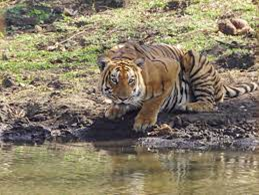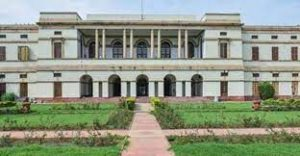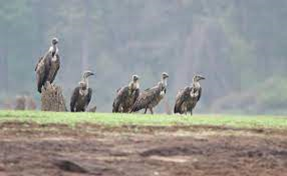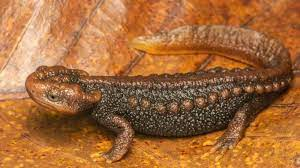Daily News Analysis.
Mudumalai Tiger Reserve : High Court Order To Relocate All Residents (GS-3)
News: Due to the village’s location within the Mudumalai Tiger Reserve’s protected region, the Madras High Court has ordered the Central government to release funding to relocate all 495 of the village’s residents.
The 321 sq. km. Mudumalai Tiger Reserve is situated in Tamil Nadu’s Nilgiris District in the tri-junction of three states, namely Karnataka, Kerala, and Tamil Nadu. It is located on the Northeastern and Northwestern slopes of the Western Ghats’ Nilgiri Hills. It is a section of India’s first biosphere reserve, the Nilgiris Biosphere Reserve.
The Wayanad Wildlife Sanctuary in Kerala, Bandipur Tiger Reserve in Karnataka, the Nilgiris North Division in South India, and Gudalur Forest Division in South West all share a shared border with it. “The ancient hill range” is the meaning of the word Mudumalai. The Western Ghats were created 65 million years ago, in fact.
It has an undulating topography with an elevation range of 960 to 1266 meters. This area contains a range of habitats, including secondary grasslands, wetlands, moist deciduous forest, moist teak forest, and dry teak forest. It has valuable timber species like Teak, Rosewood, and tall grasses that are known as “Elephant Grass” and huge varieties of bamboo.
Fauna: Wild rice, ginger, turmeric, cinnamon, and other cultivated plant relatives are wild relatives of this one consists of, among others, the tiger, elephant, Indian gaur, panther, sambar, spotted deer, barking deer, mouse deer, common langur, Malabar giant squirrel, mango, and hyena.
Theppakadu Elephant Camp, which is a part of the Mudumalai Tiger Reserve, served as the backdrop for the recent Oscar-winning film “Elephant Whisperers.”
Tiger population in India
- 3,167 tigers will be living in India in 2023. Prime Minister Narendra Modi shared the total number of tigers in India on the occasion of Project Tiger’s 50th anniversary.
- According to the most recent census, there are now 3,167 tigers in India, an astonishing 200 more than there were four years ago. This excellent achievement demonstrates India’s persistent dedication to wildlife protection and represents the concerted efforts of the government, environmentalists, and local communities.
- Given that India now boasts 75% of the world’s tiger population, this is a tremendous accomplishment.
Pibot : Humanoid Robot (GS-3)
News: The ‘Pibot’ humanoid robot is being created by a team of engineers and scientists at the Korea Advanced Institute of Science & Technology (KAIST) to operate aircraft without altering the cockpit. The first humanoid pilot in history is Pibot.
By operating each individual control in the cockpit, which was created for people, it can fly an airplane just like a human pilot. It combines robotics and artificial intelligence technology, processing the flight manual’s natural language and giving real-time flying control.
Using high-precision control technology, Pibot can deftly operate flying instruments even in the presence of intense vibration in an airplane. Pibot can keep an eye on the aircraft’s condition thanks to its external cameras, and it can control key switches on the control panel with the aid of its inside cameras.
It has the ability to memorize international flight charts and execute flawless flight missions on any air route. It has the ability to memorize emergency and operation instructions for aircraft (QRH, an in-cockpit manual that the flight crew can consult in the event of an in-flight issue) and react quickly.
The humanoid robot may function as a pilot or first officer by speaking to air traffic controllers and other humans in the cockpit via speech synthesis.
Korea Advanced Institute of Science & Technology
The leading science and technology university in Korea is KAIST. Our graduates have been major contributors to Korea’s breakthroughs, and KAIST has served as the entry point for cutting-edge science and technology, creativity, and entrepreneurship. KAIST will keep pursuing advancements in science and technology as well as the global and domestic economic growth of Korea.
To contribute to the happiness and prosperity of humanity, KAIST educates, conducts research, and pioneers new technologies. In order to create knowledge and turn it into revolutionary innovation, KAIST supports individuals who are creative, take on difficulties, and have compassionate minds.
Prime Ministers Museum And Library (PMML) Society (GS- 2)
News: The Prime Ministers’ Museum and Library Society has lately replaced the moniker Nehru Memorial Museum and Library (NMML) in writing.
The Prime Ministers’ Museum and Library (PMML) Society is an independent organization within the Indian Ministry of Culture. It is located in New Delhi’s storied Teen Murti campus, which is close to Rashtrapati Bhavan. PMML is committed to advancing cutting-edge study of modern and contemporary India.
Teen Murti House, designed by Robert Tor Russell, was the official residence of the Commander-in-Chief in India and was constructed in 1929–1930 as a component of ‘Edwin Lutyens’ imperial capital.
Jawaharlal Nehru, the first Prime Minister of independent India, moved into Teen Murti House in August 1948 after the final British Commander-in-Chief left the building. He stayed there for sixteen years until his passing on May 27, 1964.
On November 14, 1964, Jawaharlal Nehru’s 75th birthday, President of India Dr. Sarvapalli Radhakrishnan solemnly dedicated the Teen Murti House to the country and opened the Nehru Memorial Museum.
The Prime Ministers Museum and Library (PMML) Society was established by the government to oversee the institution on April 1st, 1966.
There are four main components of PMML
- Museum of Memorial;
- Books on contemporary India;
- Contemporary Studies Centre;
- Planetarium Nehru
Corbett Tiger Reserve : Bird Survey (GS-3)
News: About 275 bird species, including two that are critically endangered, four vulnerable, and two endangered species, were counted in the most recent bird survey at the Corbett Tiger Reserve.
Principal conclusions of the study
- According to the report, two species—the red-headed and white-rumped vultures—that are on the International Union for Conservation of Nature’s (IUCN) list of critically endangered species were identified during the survey.
- The researchers also counted two endangered species in their survey: the Egyptian vulture and the Pallas’s fish eagle.
- The survey also included the counting of four vulnerable bird species- the great hornbill, great slaty woodpecker, gray-crowned prinia, and river tern.
Tiger Reserve at Corbett
- It is situated in the Patli Dun valley’s surrounding area of Nainital, Uttarakhand.
- For the Corbett, the Ramganga, Sonanadi, Palain and Mandal, and Kosi rivers make up the bulk of its hydrological resources.
- Corbett National Park is located in the reserve’s core area, and the Sonanadi Wildlife Sanctuary is located in its buffer zone.
- The evergreen Sal and its combination trees, the Sheesham, and the Kanju, which are widely distributed on the ridges, are the trees that contribute to Corbett’s floral diversity.
- Fauna include tigers, leopards, elephants, sambers, spotted deer, and hog deer.
Tylototriton zaimeng : New Species Of Salamander (GS-3)
News: In the Zaimeng Lake in Manipur, a group of scientists discovered a new species of salamander called Zaimeng Tylototriton
Zaimeng tylototriton
- Earlier, this had been confused with its closely related species, T. himalayanus and T. verrucosus.
- The new salamander is a sister species to the T. panwaensis and T. houi found in northern Myanmar and southern China, according to phylogenetic analyses. It turned out to be a salamander of average size.
- Its huge, wide head is adorned with a well-developed sagittal ridge, a rounded nose, and projecting supratemporal bony ridges. Short and neatly shaped, the creature’s limbs did not overlap when placed along its body.
- It could be distinguished from its relatives by the large, unequal vertebral ridge that ran over its back, which was accompanied by 13–14 pairs of rib nodules.
- With dull orange to yellowish-brown markings on its head, vertebral ridge, rib nodules, palms, soles, vent, and ventral tail ridge, it had a beautiful brown coloration. This enigmatic creature was further distinguished by its finely arranged vomerine teeth, which were arranged in two unique, curving bell-shaped series.
Lagoon Zaimeng
- On top of the Khongtheng mountain ranges is where it is located.
- The Liangmai Naga dialect word for “puzzle” or “mystery” is zaimeng.
- The majority of the lake is essentially a marshy mess of dense weed-like grasses, reeds, and green mosses.









